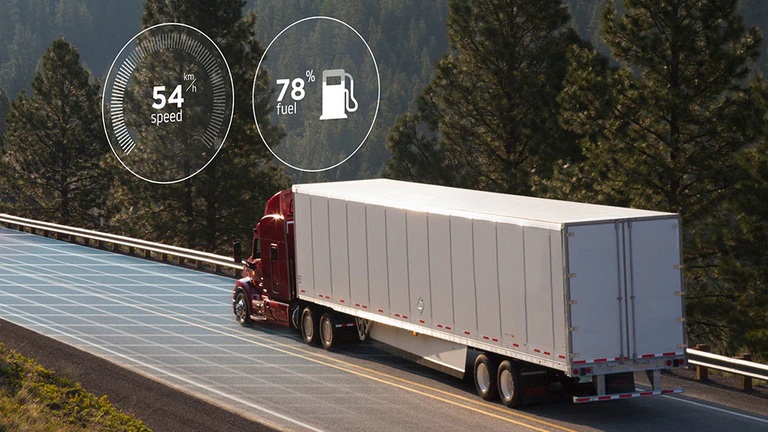Driver acceptance will be the key factor in aiding with widespread advanced driver assistance systems acceptance, suggest industry experts.
Over the last five years, the industry has seen a 50% increase in the spec’ing of active braking systems on Class 8 vehicles.
With safety a continually discussed topic across the commercial vehicle industry, groups are working to continue the push for wider visibility and acceptance of advanced driver assistance systems (ADAS) on heavy duty vehicles.
“Our customers tell us that safety really has replaced fuel economy as their number one priority when it comes to making purchasing decisions,” said Len Copeland, product marketing manager for Detroit Products, during a recent discussion on current and future considerations of ADAS technology for heavy duty trucks. Copeland was one of four industry experts who shared insights during the S.5 study group session at the Technology & Maintenance Council Spring Meeting.
Where vehicle technology ranks
The American Transportation Research Institute (ATRI) conducts an annual top industry issues report for both fleets and drivers to understand top industry challenges.
While vehicle technology isn’t directly stated as a top issue on either list, Dan Murray, senior vice president of the American Transportation Research Institute (ATRI), indicated there are “hints” of ADAS technology impacting both driver and carrier concerns.
In the ATRI 2020 top industry issues results for drivers, automated truck technology came in as the number-six issue. On the same survey conducted for carriers, Murray indicated ADAS and other safety technologies can help to address concerns such as rising insurance costs.
 ATRI’s Dan Murray shared “hints” that vehicle technology may become a more widespread concern based on the ATRI 2020 top industry issues survey: For drivers, automated truck technology came in as the number-six issue and for carriers, ADAS and other safety technologies can help to address concerns such as rising insurance costs.Screenshot: TMC Spring Meeting 2021
ATRI’s Dan Murray shared “hints” that vehicle technology may become a more widespread concern based on the ATRI 2020 top industry issues survey: For drivers, automated truck technology came in as the number-six issue and for carriers, ADAS and other safety technologies can help to address concerns such as rising insurance costs.Screenshot: TMC Spring Meeting 2021
“Insurance costs do not impact the industry equally,” Murray said. “When you look at insurance costs per mile by fleet size, you see the smallest carriers – who oftentimes have the hardest time finding the capital to invest in technology – are most dramatically impacted by these insurance costs, particularly recently, with these double-digit increases.”
Murray did indicate there is a misconception, however, that insurance companies will offer lower up-front premium discounts to fleets who spec advanced safety technologies. The reality is a bit more nuanced, suggesting ADAS usage can help to improve fleet safety overall, thereby lowering insurance premiums in the long-run.
“Commercial insurance does not give front-end discounts for technology adoption,” Murray said. “The business model for commercial insurance says, ‘You invest in these systems, and your loss history, your experience, ratings, all these other actuarial terms will ultimately benefit you through fewer crashes and lower costs.’”
Overall, he anticipates vehicle technology will play a more prominent role on the ATRI top industry issues list in the not-so-distant future. “I wouldn’t be surprised next October when we release the [20]21 report that we will see technology much more overtly in these lists.”
As it relates to operational costs of trucking, Murray indicated ADAS can potentially both help and hurt fleet operations. ATRI conducts an annual operational cost analysis, and this report indicates a continued trend of increasing operational costs – from a maintenance and repair standpoint to insurance premiums. “We’re buying newer and newer trucks and trailers but we’re not seeing decreases in repair and maintenance costs,” Murray advised.
“The question legitimately comes into play, ‘How and where can I fit ADAS into my investment plans, my adoption plans?’” he added.
Perceived barriers to adoption
The Federal Motor Carrier Safety Administration (FMCSA) Tech-Celerate Now program is a joint effort between numerous industry groups, including the American Trucking Associations (ATA), the ATA Technology & Maintenance Council (TMC), ATRI, and Owner-Operator Independent Drivers Association (OOIDA) Foundation. The Tech-Celerate Now program looks to research and educate the commercial vehicle industry on ADAS development, implementation, and impact.
Ross Froat, director of technology and engineering policy for ATA, shared progress on current achievements of the program since its launch in January of 2020. The program conducted three industry stakeholder surveys with a collection of 1,000 responses to understand industry perspective on ADAS, as well as the development of two ADAS research reports highlighting ADAS baseline adoption and research on technical and market barriers of adoption with ADAS. Additionally, a safety guide and investment guide have been developed to help educate industry stakeholders on ADAS adoption. All research and materials have been made available for the industry.
The Tech-Celerate Now program conducted an ADAS survey with participation from 30 industry companies serving the ADAS segment – including truck manufacturers, component suppliers, and aftermarket suppliers – to understand market penetration and availability of ADAS technologies. The survey explored ADAS technology available on Class 3 through 8 vehicles in 2019 through 2021 model years. Results found an estimated 130 vehicle models available. Of those 130 models, Class 8 trucks make up the largest percentage of vehicles at around 39%; followed by Class 7 sharing 18% of makes available.
Source: https://www.fleetowner.com/
CUT COTS OF THE FLEET WITH OUR AUDIT PROGRAM
The audit is a key tool to know the overall status and provide the analysis, the assessment, the advice, the suggestions and the actions to take in order to cut costs and increase the efficiency and efficacy of the fleet. We propose the following fleet management audit.




